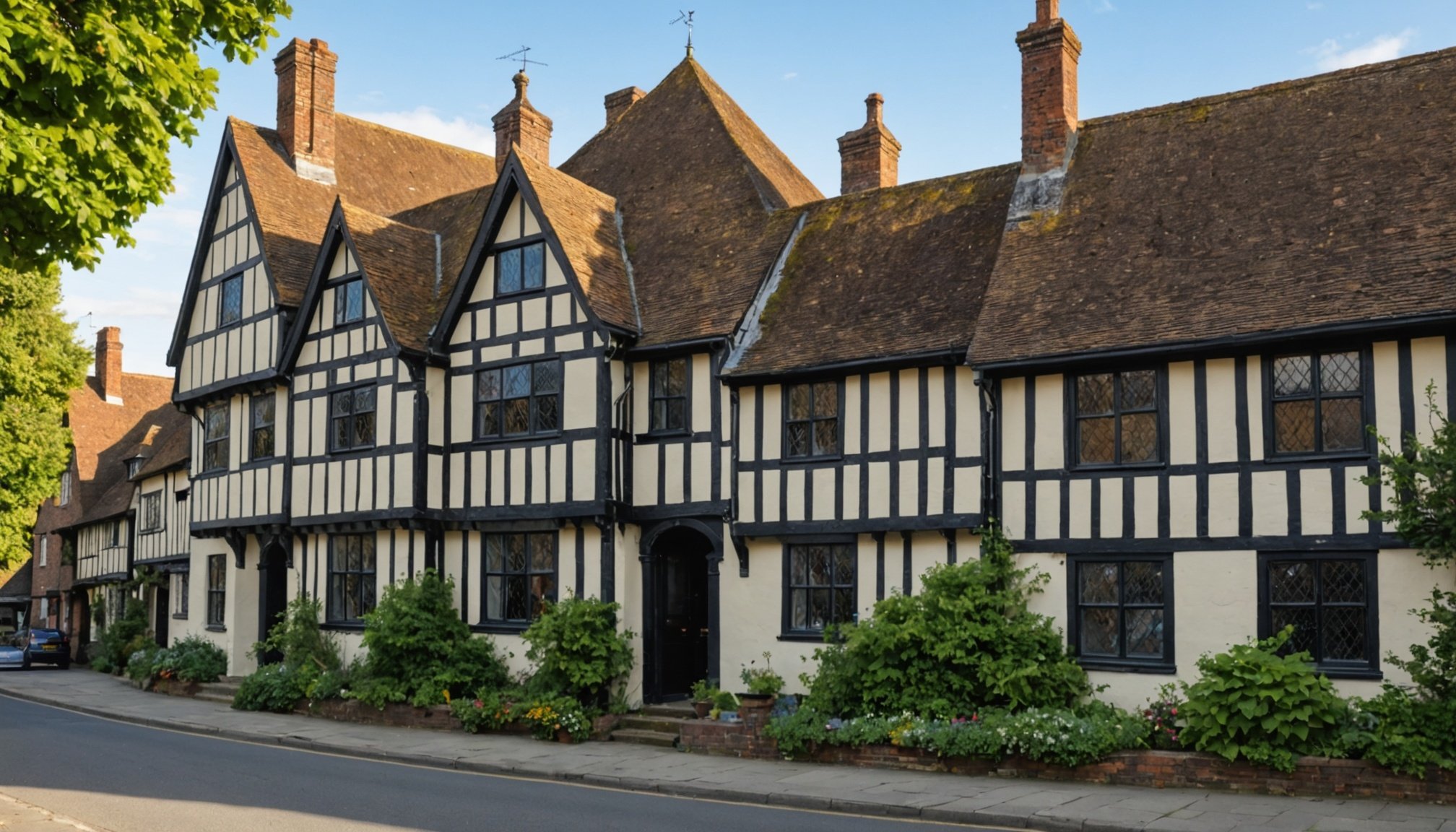Overview of Historical Property Restoration in Canterbury
Restoring historical properties is essential for preserving cultural heritage, ensuring that the stories and achievements of past eras continue to inspire present and future generations. In Canterbury, the process of historical property restoration comes with unique challenges due to its rich history and the particular architectural features of its buildings.
One of the primary challenges is balancing modern safety standards with the preservation of original structures. Many historical buildings were constructed using techniques and materials that are not aligned with today’s standards. The Canterbury Guidelines play a crucial role in addressing this issue. They provide a comprehensive framework to help navigate these complexities, ensuring that renovations maintain the building’s historical integrity.
Also to discover : Top Techniques for UK Landlords to Effectively Resolve Tenancy Disputes
Local regulations and standards are established to guide property owners and restorers. These include directives on acceptable materials, structural changes, and aesthetic considerations. Adhering to these can be demanding but is necessary to protect cultural heritage.
Therefore, anyone involved in historical property restoration in Canterbury must be well-acquainted with these guidelines to successfully manage and preserve the essence of their restorations while meeting modern requirements.
Additional reading : Key Factors to Consider When Installing EV Charging Stations in Multi-Unit Residences
Assessment of Historical Properties
Use of Property Assessment and Historical Evaluation is crucial when examining historical properties. Each property’s value is a mix of its structural integrity and its historical significance.
Conducting a Structural Assessment
A detailed structural assessment determines a building’s structural integrity and safety. This involves evaluating foundations, walls, and roofs, ensuring they meet current safety standards. Structural soundness mitigates the risks associated with aging materials and construction techniques.
Understanding Historical Significance
Understanding the historical significance focuses on evaluating a property’s past importance. This involves examining attractive attributes like architecture style, historic events, or notable past owners. Historical evaluation ensures any restoration needs maintain the building’s original character.
Identifying Restoration Needs
Identifying restoration needs requires balancing historical accuracy with structural updates. Ensure authenticity factors in designs and materials match original methods while incorporating modern techniques for preservation. Proper documentation of these assessments and restoration steps, using photographs and written reports, is crucial for maintaining a property’s historical narrative. Attention to detail in documenting helps when addressing legal requirements or securing grants for future restorations.
Funding and Financial Considerations
When embarking on restoration projects in Canterbury, understanding the financial landscape is crucial. Fortunately, there are a variety of grants and funding sources available. These include local government grants and community heritage funds, which are specifically allocated to support restoration efforts. Exploring these grant opportunities can significantly ease the financial burden and allow for more comprehensive planning and execution of your project.
Effective budgeting is another vital element in the restoration process. It involves estimating not only immediate costs but also anticipating future financial needs. This forward-thinking approach ensures that restoration projects are sustainable and do not encounter unexpected financial hurdles. By precisely calculating expenses and aligning them with available funding options, project managers can maintain financial clarity and control.
Furthermore, investing in restoration brings long-term financial benefits. Over time, restored properties often experience an increase in market value. This value appreciation can outweigh initial expenditures, presenting the restoration as a financially sound decision. Therefore, while the upfront costs might seem daunting, the anticipated financial rewards in property value and preservation of heritage should not be underestimated. Embracing both strategic funding avenues and structured budgeting can lead to successful and economically viable restoration endeavors in Canterbury.
Legal and Regulatory Compliance
Navigating the legal compliance landscape is crucial when dealing with historic buildings and local regulations. Property owners must ensure their actions align with existing laws to avoid potential pitfalls.
Understanding Historic Preservation Laws
Historic preservation laws safeguard buildings of cultural significance. These regulations vary, reflecting the uniqueness of each locale. Property owners should familiarise themselves with the specific laws that apply to their property to ensure adherence.
Securing Necessary Permits
Obtaining the proper permits is a vital step in legal compliance. The permit application process requires diligence, as timelines and requirements can differ markedly depending on the jurisdiction and the nature of the project. Early application is advised to avoid delays.
Engaging with Local Authorities
Engaging constructively with local authorities can facilitate smoother compliance with legal requirements. An understanding of the community’s values aids in navigating community engagement effectively. Advocacy and open communication often help resolve conflicts and foster mutual understanding.
- Heritage listings guide which aspects of a property must be preserved.
- Permits may be needed for modifications, ensuring changes respect historic integrity.
- Community advocacy is key, fostering collaboration and transparency.
Understanding these facets in detail allows property owners to comply successfully with local regulations while honouring the historical essence of their buildings.
Sourcing Materials and Expert Help
Ensuring that authentic materials are used in any restoration project is crucial for maintaining both integrity and historical accuracy. This can be challenging, but the benefits are invaluable, preserving the piece’s original beauty for generations.
When it comes to materials sourcing, collaborating with local artisans is essential. These experts not only possess a deep understanding of traditional crafting techniques, but also the knowledge of where to obtain genuine materials that match the originals. They can offer personalized insights into the best sourcing methods and even suggest alternatives that stay true to the project’s heritage.
Additionally, when reaching out to local specialists, consider requesting their guidance on sustainable and eco-friendly options. Many artisans now incorporate environmentally conscious practices. This not only supports ecological balance but also ensures that projects don’t compromise on quality or authenticity.
Involving local craftsmen early in the process can significantly enhance the restoration’s success. Their expertise offers a blend of traditional wisdom and modern sustainability, paving the way for beautifully restored work that respects both craftsmanship and environmental health. Engaging in these practices can also foster a closer connection to the community, promoting heritage and local artistry.
Project Management Strategies
Engaging project management strategies begin with thoughtful restoration planning, essential for orchestrating a successful and organized initiative. These strategies lay the groundwork for executing projects that are efficient and goal-oriented, ensuring that every resource is used optimally.
Developing a Detailed Project Plan
The cornerstone of successful project management is the development of a comprehensive project plan. This plan should detail all necessary tasks, allocate resources, and include a realistic timeline. Establishing clear objectives helps ensure that all team members are aligned from the start. A well-drafted project plan serves as a roadmap, guiding everyone towards achieving the project’s aims effectively.
Timeline and Milestones
Setting precise timelines and actionable milestones is critical. These help track progress and keep the project on schedule. Breaking the project into smaller milestones makes complex tasks manageable, allowing for periodic evaluation and adjustment as needed. Timelines should be realistic yet ambitious enough to drive commitment and focus.
Risk Management and Contingency Plans
Identifying potential risks early in the project management process helps prevent major setbacks. Developing robust contingency plans is crucial for mitigating these risks, ensuring that the project can adapt smoothly to unforeseen challenges. By planning ahead, project managers can devise strategies to minimize disruption and maintain momentum even when obstacles arise.
Case Studies and Success Stories
Exploring successful restoration projects in Canterbury provides valuable insights into both the strategies employed and the outcomes achieved. One exemplary project involved a concerted effort to rehabilitate the native vegetation in Canterbury’s wetlands. This initiative not only enhanced the area’s biodiversity but also improved community engagement through frequent local workshops.
Key lessons learned underline the importance of community-led efforts. A great example comes from a local group mobilising volunteers, achieving remarkable results in riverbank stabilisation. This success was built on community pride and collective action, highlighting how essential local involvement can be in restoration projects.
Expert consultations have played a crucial role in these projects, providing a solid foundation for sustainable practices. By drawing from experts’ wealth of knowledge, best practices have emerged, such as developing adaptive management plans and integrating traditional ecological knowledge. These strategies have proven effective in making restoration efforts more resilient and aligned with natural cycles.
In summary, these case studies emphasize the importance of collaboration between communities and experts. By sharing these success stories, other regions can take inspiration and apply the best practices demonstrated in Canterbury’s restoration projects. This collaborative approach is crucial for achieving long-term environmental and community benefits.
Resources for Historical Restoration
Embarking on a historical restoration project is both rewarding and challenging. Fortunately, various resources are available to help guide successful outcomes.
Recommended Reading and Guides
To deepen your understanding, specific guides and reading materials exist to address the nuances of historical restoration. Look for publications that include case studies, best practices, and detailed instructions on traditional techniques. These can often serve as valuable references throughout the restoration process.
Local Organizations and Societies
Getting involved with local suppliers and historical societies can offer rich resources and networking opportunities. Local organizations often have access to specialised materials and experts experienced in the unique architecture and history of Canterbury. Engaging with these societies not only supports your project with local insights but also helps in contributing to community heritage preservation.
Online Platforms and Tools
Online platforms can offer real-time support, digital guides, and access to a directory of restoration resources specific to Canterbury. These digital tools frequently include project management capabilities to document and track your progress, ensuring efficient planning and implementation. Engaging in online forums can also connect you with like-minded individuals who share your passion for restoration.











